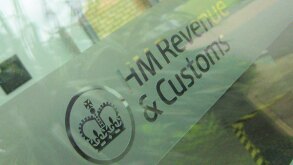In Future of VAT: Continued evolution and increasing significance, we outline a series of predictions on the increasing importance of VAT as a national revenue raiser, as well as anticipated changes to its scope and mode of operation. Here, we are taking this one step further and looking at how technological change will impact VAT administration and compliance, and its implications for the role of VAT professionals.
Specifically, we anticipate that:
Government-regulated invoicing systems will grow significantly – as well as their importance becoming ever more significant – and that they will wreak havoc on compliance costs for multinationals;
VAT compliance will be met by technology and will be outsourced by most large businesses. Simplifications which reduce the risk of fraud, or which are necessary to prevent errors or eliminate disputes will grow;
In-house tax departments, and tax advisors, will be disintermediated by tax authorities;
VAT will more closely resemble sales tax (through the use of blockchain technology); and
Unless tax professionals and the organisations they serve transform urgently, they risk falling down the value chain.
In many respects, the technological changes envisaged here are a continuation of the rapid changes seen in recent years. We predicted this some years ago and as set this out Five years of rapid VAT evolution: How have predictions held up? China will continue to be, as it has been, in the vanguard of these technological developments.
Government-regulated invoicing systems will wreak havoc
If you ask practitioners in most countries whether tax invoices are regulated, the answer is invariably yes. However, here, reference is not being made to examples of tax invoices being issued by businesses, either in paper or electronic form, from the business' own enterprise resource planning (ERP) system.
Typically, tax invoices in most countries contain certain standardised content in relation to a transaction. These include: the inclusion of the supplier's name and the tax authority-issued registration number; the recipient's name; the transaction date; a description of the relevant good or service being supplied; the transaction amount; and the amount of VAT charged.
Rather, we are talking about countries in which the ability to issue such a tax invoice, or to generate a transaction record, is regulated by the government. That is, where a tax invoice must be issued through the use of government software or hardware, and not through a business' own ERP system. We are already seeing this in jurisdictions such as mainland China, Brazil, Taiwan (China), Indonesia, Korea and India, and similarly in Portugal, which is also requiring taxpayers to issue invoices through government-certified software.
The theory or intention behind the use of government-regulated invoicing systems is that they arguably seek to improve the integrity of transactions and their recording; help to reduce the VAT gap; and they aim to eradicate VAT fraud by only allowing a recipient an input tax credit if the corresponding output tax of the supplier has been accounted for.
While these are worthy pursuits, in many respects they can impose significantly higher compliance costs on businesses. It is a classic example of rule-making which seeks to mitigate the fraud of a small minority, at the expense of the vast majority who are ordinarily compliant. Based on experience, a significant number of challenges can be posed for businesses by the introduction of such government-regulated invoicing systems. For example:
Duplication, because tax invoices are issued in addition to normal commercial invoices;
The need to build an interface, or application program interface (API) or other linkage between a business' own ERP system and the government regulated invoicing system;
The fact that from an IT security perspective, businesses are often compelled to ringfence these systems from their own secure IT environment;
Reconciling ERP data (commercial invoices) to the regulated tax invoices;
Losing input tax credits where suppliers omit to issue tax invoices;
The impact of service outages and maintenance which can detrimentally impact business; and
The need to adopt processes which may not match the ordinary processes or systems used in the business.
Interestingly, many countries, especially in the EU, have chosen to adopt the less interventionist approach of real-time reporting. That is, to obtain the transaction level data on a real-time basis. As mentioned, this is a step short of government-regulated invoicing where the government effectively seeks to interpose itself into the transaction/invoicing chain. One wonders, and perhaps even speculates, that some countries applying real-time reporting may well transition to government regulated invoicing in the near future.
The main reason for calling out this very recent trend in government-regulated invoicing systems is the exponential increase in compliance costs which would be caused if all countries did this, and if they did so in their own way. That is, if each country chose to adopt their own regulated invoicing system, each taking a slightly different form, and with unique software or hardware requirements. This is the risk that creates most concern.
If this trend continued, it would effectively mean that multinational companies seeking to centralise their global compliance efforts, would need to maintain and operate literally over 100 different country-specific hardware or software systems and interface-type solutions. In short, the benefits of centralisation would be lost.
The answer to this problem is not to naively suggest that there could be a single global regulated invoicing system. Rather, it is to suggest that a body like the OECD could and should seek to define common standards in a way that seeks to reduce compliance costs (for businesses and governments alike) through that commonality. For example, by defining the optimal core functionality of the software or hardware being developed; by prescribing how that software or hardware should interface with common ERP systems; as well as minimally acceptable IT security standards. In fact, it could be similar to the guidance published by the OECD on the standard audit file for tax (SAF-T), which is now increasingly being introduced by countries mainly in Europe.
An interesting by-product of the advent of government-regulated invoicing systems is the increased importance of tax invoices in VAT systems. For example, longstanding practice in Australia was that while the law required the issuance of tax invoices to consumers within 28 days of a request and law prescribed the minimally acceptable content of such tax invoices, in the event of an audit tax, invoices serve merely as one form of evidence as to when, who and how much was involved in a given transaction. It is never determinative of the transaction itself. In common parlance of form versus substance, the tax invoice may describe the form, but the substance is the whole circumstances of the transaction itself.
By contrast, China, with its highly regulated invoicing system (known as the Golden Tax System), put a high level of importance on tax invoices, which were treated as being the best evidence of a transaction. This is not to say that the form of the tax invoice will always supplant the substance of a transaction, but exceptions are relatively limited in practice (for example, fraud). Examples abound of taxpayers being denied input tax credits which they would otherwise have been entitled to, merely by reason of the (wrong) type of tax invoice, the content of the tax invoice, the failure to retain the tax invoice, or the failure to verify the tax invoice.
We predict that along with the rise of government-regulated invoicing systems and the increased importance of data and analytics by tax authorities in auditing or verifying VAT compliance, practically the data inputted into tax invoices will assume elevated importance – in the fullness of time it will be virtually determinative evidence as to how, when and for how much a transaction takes place. This is not to suggest that the law will explicitly state this, rather it will be the practical reality of a system which relies on those same data fields used in tax invoices to feed the ERP systems and in turn the analytics used in the detection of errors or anomalies.
Already, we are seeing developments in optical character recognition technology, together with artificial intelligence, that are enabling human-less invoicing – system logic is driving the invoice issuance process by a supplier through to the receipt, validation and processing of invoice payments by the recipient.
In short, we are beginning an era in which there is limited, or even no, human interaction in the tax invoice issuance process. As such, if 'the system' does not flag it as anomalous, erroneous or extraordinary, the content of the tax invoice becomes the reality.
VAT compliance will become a technology proposition and will largely be outsourced
It almost seems contradictory to argue that large businesses will outsource their VAT compliance and related technology needs, given the impending death of the VAT return discussed in Future of VAT: Continued evolution and increasing significance. However, let's consider what remains when VAT returns die.
As noted above, the longer-term perspective is that VAT compliance will effectively be managed through the data which is fed from business' own ERP systems directly to the tax authorities, or via government-regulated invoicing systems.
As we all know, the single biggest operational challenge facing in-house tax departments right now is in managing data. Data management problems stem from a number of factors, such as:
The use of multiple systems within most organisations, including the need to maintain legacy systems;
The problem in extracting data from those multiple systems; having them 'talk' to each other, or in bringing together (coherently) data from those multiple systems;
The challenges of reconciling the data, or in making manual adjustments to the data; and
The continuation of historical practices where ERP systems were configured for the benefit of the business and finance departments, but not necessarily the in-house tax department.
In fact, among the most common complaints made by in-house tax departments is that they are unable to fully comply with tax laws because of system limitations. This usually necessitates practical workarounds or manual processes to manage compliance.
Moore's law, adapted to a data context, would suggest that data will double every two years, with businesses accruing more systems rather than fewer. Given this, logic would suggest that data management challenges will increase exponentially. And herein lies the role of the VAT compliance professional. Their role will be to design processes (including through robotic process automation) and deploy technology tools (in many cases using artificial intelligence) to manage the data which, in turn, manages VAT compliance. In short, VAT compliance will be (nearly) entirely a technology proposition.
The second part of our proposition, which is that most large businesses will outsource this work, is not stated as a matter of self-interest, but instead comes down to simple economics. The reliance on technology solutions to manage VAT compliance often requires significant up-front investment cost, if built by the organisation for their own needs. Yet that same cost may be split among hundreds or even thousands of taxpayers if developed by third-party providers such as the Big 4 accounting firms or specialist software providers. The economic equation is entirely comparable with that of cloud computing, which is effective because large up-front investment costs can be shared among a large group and obtained more affordably on a subscription basis. Added to this is the fact that the maintenance and updating of VAT compliance technology can also be costly.
Two other factors also bear consideration. The first is that with the rise of government-regulated invoicing systems, the cost of technology investment increases too. The second is that as businesses digitalise their models, they increasingly need to comply on a global basis. These two factors combined will lead to an exponential increase in VAT compliance costs unless outsourcing occurs.
For these reasons, the more that VAT compliance becomes a technology play, the greater the likelihood that it will be outsourced.
Simplifications which reduce fraud, errors and disputes will proliferate
In 10 years' time, we will look back quaintly on the era in which businesses were able to claim input tax credits (in many jurisdictions) for business costs such as motor vehicle usage (fuel) for employees on work-related trips; mobile phones for employees for business use; meals for employees on business trips; and even entertainment (to the extent that is still available).
Put simply, many of these types of costs are susceptible to exaggeration and error. In an era of digitalisation, where many types of processes are highly systematised and where verification of the correctness of these credit claims would consume a disproportionately large amount of resources, it would not be a surprise for these types of claims to either be denied credits outright, or be subject to a simplification which provides an automatically determined credit amount or percentage. An example of this could be the adoption of an arbitrary 50% for all employee meal costs. Potentially, this type of simplification may even be extended to other types of costs incurred on business trips, such as accommodation and domestic air travel.
An interesting question remains as to whether simplifications will also be applied to areas such as in the financial services sector, which are currently subject to partial exemption methods (as in the EU). Singapore is a country with simplifications in this area, as it effectively mandates the percentage entitlement to input tax credits depending on the classification of the financial services institution. Many Asian jurisdictions also only provide limited flexibility in partial exemption methods, through the use of only 'revenue based' apportionment methods.
While in Future of VAT: Continued evolution and increasing significance we argued that financial services would be subject to VAT as the default method, there will likely still be certain areas for which exemption remains, thereby giving rise to the need for an apportionment of credits. Similarly, other sectors that commonly make a mix of both taxable and exempt supplies, such as the real estate sector, could also be subject to simplifications to ease compliance in calculating input tax credits.
In short, in an era of binary coding, where everything is reduced to either a '0' or a '1', it is not a stretch to envisage the end of approaches or methodologies for calculating input tax credits which are subjective, or highly prone to over-exaggeration, error, or require disproportionate tax authority resources to verify and audit.
In-house tax departments and tax advisors will be disintermediated
Among the propositions made, this is perhaps the most controversial and also the gloomiest from the perspective of a tax advisor. It is the idea that we, as tax professionals, whether working in-house or as external advisors, will likely be disintermediated by tax authorities.
Let's consider the case for this. First, it is already happening to an extent. Consider the fact that the tax authorities now deal electronically with business; in most countries they publish extensive information to help businesses comply, whether in the form of legislation, rulings, interpretations, guidance material, etc. Many tax authorities have developed chatbots and similar, such that now most routine queries are handled without the need for a tax professional. In short, understanding a businesses' obligations has already been made considerably more efficient (and require less labour or input from tax professionals) than they did in the pre-internet era of 20 years ago.
Second, as noted above, tax authorities are now building their own government-regulated invoicing systems to obtain transaction level data automatically, or they are requesting it on more of a real-time basis than ever before. With this data, they can carry out data and analytics testing to then determine whether the business is complying and, if not, by how much. They do not need tax advisors for this, certainly not as much as before.
Third, and this is the major point, in the technology race, the tax authorities will always win. They will win because the tax authorities can build technology tools which they can mandate to serve an entire population, whereas any third-party technology is always subject to competitive pressures, and the need for pricing and sales. Tax authorities are also not subject to normal returns of investment. In theory, provided the government stands to gain $1 of extra tax revenue over and above the cost of deployment of a new tool, they can proceed.
Our recent project experience, while unrelated to VAT, may nonetheless be very relevant in demonstrating the potential to be disintermediated. In 2019, the Chinese government authorities introduced new rules for the withholding of tax on employee salaries and wages. Unusually, these new rules required tax to be withheld by employers on the basis of net income concepts, not gross income. Several large professional service and payroll firms invested considerably in developing technology to facilitate employers aiming to obtain the necessary data from their employees efficiently, which would in turn allow them to determine the net income amounts from which to calculate the tax withholding in respect of each employee. Just prior to its commencement, the government decided to launch its own technology tool, which would allow employees to upload the data and transmit it to employers each month, in a type of pre-filling exercise. In the blink of an eye, the government had effectively assumed responsibility for a business opportunity which would, historically at least, have been carried out by the private sector.
In all likelihood, we will end up with a mix of government-owned technology to manage the compliance or risk processes, with government-approved technology: tools developed by the private sector which meet certain government specifications. Australia's single touch payroll system used for employment tax reporting is an example of this latter approach.
Make no mistake though, tax authorities stand the very real prospect of disintermediating a significant proportion of the tax profession!
VAT will increasingly resemble sales tax (thanks to blockchain)
The 2017 edition of China – Looking Ahead, included an article entitled Lighting a pathway to 2025, which argued that VAT will more closely resemble a sales tax. The response to the article was highly divisive, with some practitioners considering the proposition to be ludicrous, while others agreed. To be fair, at face value, the proposition is ludicrous when one considers that VAT has now been expanded to more than 160 countries around the world; a sevenfold increase in the past 40 or so years.
However, the validity of the proposition is simply illustrated by considering how VAT works through a typical supply chain of a manufacturer supplying a pair of sneakers to a wholesaler, and through to a retailer before being sold to an end consumer. It is only when one recognises that the supply of the sneakers involves three separate output tax obligations and two separate input tax credit entitlements, which effectively cancel out the corresponding output tax amounts on those transactions, all so that when the retailer sells to the end consumer, the output tax will be accounted for. In short, five separate recordings on a VAT return which must be accurate, where only one of which actually matters.
One of the key policy rationales for imposing this multiplicity of obligations, at least historically, was to ensure that VAT would be accounted for, in part, even if there was fraud in some other part of the supply chain. However, the reality is that by imposing so many obligations, albeit on different parties, the potential for fraud remains and some argue it is exacerbated. Leaving that issue aside, surely even an eight year old child can recognise the potential for a technology solution to radically overcome the inefficiency inherent in this system.
Now if we wind forward two years since that article was published, the same prediction could be ventured now, but perhaps with even stronger force. In particular, four main developments have, in our view, opened the doors to VAT more closely resembling a retail sales tax.
First, the use of blockchain or distributed ledger technology (DLT) seems to have progressed from a largely theoretical concept (except in the case of crytocurrencies), to becoming more widely used. In particular, there have been increasing request for proposals (RFPs) from large multinationals seeking assistance in deploying blockchain technology to manage their invoicing processes.
It is increasingly clear that blockchain can be deployed as a means to solve VAT fraud; for example in the EU, where VAT fraud with missing traders happens in certain jurisdictions on an unacceptable scale. Given that VAT is collected by businesses in multiple stages of a supply chain, where money flows directly between suppliers and recipients and invoices are being used to collect the VAT from customers and by intermediaries to claim input tax credits, with no or limited control and visibility on the VAT collection by government, further measures are clearly required. Where a trader goes missing without paying the VAT (collected from its customers) to the tax authorities, tax authorities are often too late in detecting the fraud and unable to trace fraudsters, while the recipient of that supply still claims the credit for the input tax it incurred and paid to that supplier.
Blockchain has the ability to fundamentally transform the VAT collection process with greater transparency and security for both tax authorities and taxpayers. A distributed ledger can connect taxpayers, tax authorities, intermediaries and even banks.
Indeed, blockchain as a concept can readily be applied to VAT through a supply chain – that is, rather than requiring each party throughout the supply chain to account for VAT, B2B parties can be matched through a form of digital certificate, with only the last stage of the supply chain accounting for the VAT.
There is a powerful analogy in terms of the potential transformation of VAT under blockchain, with the transformation in the early 20th century in the system of land titles used in Australia and several other Commonwealth countries. Under old system land titles, it was necessary to trace the history of any land titles back to inception, in order to ensure that the current land title being transferred was validly owned by the vendor and therefore could be sold to the purchaser, and not later be voided or challenged. By contrast, under the Torrens Title system, the purchaser of any parcel of land can rely upon the indefeasibility of the current title to the land shown on the register.
Likewise, in a VAT context, instead of the necessary accounting for output tax and input tax through the early stages of any supply chain, blockchain would allow for digital matching of B2B supplies and related invoices, such that ultimately only the final stage involving B2C transactions would require a real tax outlay.
Second, in the recent elections for the new Prime Minister of the UK, carried out by the Conservative Party, one of the candidates, Michael Gove, proposed replacing the UK's VAT system with a simpler sales tax system. Interestingly, the hysteria this created was significant, with one commentator writing in the influential weekly magazine, The Spectator, asking whether Gove was "on drugs". Other tax professionals on LinkedIn wrote furiously in defence of VAT, fearing somehow that their professional expertise and very livelihood would be at risk.
With respect, many of these comments completely missed the point. They singularly failed to take into account the impact of technological developments which could create greater security and validity in the transaction lifecycle, without the need for the supplier to account for output tax and the recipient claim input tax on B2B transactions. It similarly ignores the fact that much of the highly publicised examples of fraud within VAT systems occurs at the B2B level – for example, with missing trader and carousel fraud; with the EU scheme on trading carbon permits; and in Australia, with precious metals trading.
Third, and perhaps most fundamentally, it ignores the fact that VAT systems are themselves having to create special rules or exceptions to combat fraud. Take for example the imposition of a reverse charge in Australia in the precious metals industry; the requirement for purchasers to withhold VAT on taxable sales of residential real estate in Australia; the numerous examples of reverse charge rules being applied throughout the EU, for instance a domestic reverse charge mechanism for mobile phones, chips, laptops, tablets, etc; and in New Zealand, with the zero rating of B2B land sales. These are all examples of the VAT system failing to properly combat fraud. In effect, the substitutions in certain cases resemble forms of retail sales taxes.
Fourth, the recent phenomenon and growth of e-commerce platforms in facilitating the cross-border sale of goods and services between business and consumers (or between consumers) has necessitated yet more stop gap measures to overcome fundamental limitations in traditional collection methods under a VAT. In particular, we have seen the use of intermediaries who assume a liability or role as principal in accounting for VAT on transactions; with Australia's low value goods regime being among the most extreme examples. Other examples include split payment methods, joint and several liability provisions (for example, in Germany), and collection from other intermediaries such as banks (for example, in Vietnam), which are either being implemented or debated.
In the US, special collection methods on platforms are being introduced in response to the Wayfair decision. Each of these collection methods serve to support or centralise the enforcement of collection from a few large participants, in preference to the real suppliers of the goods and services. While the attractiveness of these methods from a tax authority perspective is obvious, it plainly represents a further admission that the fundamentals of VAT systems are no longer fit for purpose, at least in a highly digitalised world.
In short, blockchain technology could be used to provide an immutable, time-stamped, distributed and distributable, public record of all transactions occurring on the chain, with real-time tax collection. This provides the means by which, in substance, VAT more closely resembles a retail sales tax.
Tax professionals and their client organisations must transform or risk falling down the value chain
The final proposition is more of an early warning for all tax practitioners, whether working in-house or as external tax advisors. The call to action stems from a concern, briefly discussed above, that the most pressing problem facing the tax profession right now is a data problem. Take for example the following statements, which seem to reflect the reality of most businesses right now:
1) "We can't get the data";
2) "The quality of our data is poor";
3) "We spend an inordinate amount of time scrubbing, reconciling and adjusting our data";
4) "Even when we have the data, we need to perform significant manual adjustments";
5) "Our data is spread across multiple systems, which do not speak to each other"; and
6) "The tax authorities believe we have the data at the ready, in the form in which they want it".
With the increase in the volume of data, the growing importance of real-time reporting, and the heightened expectations around robust processes and systems, how can the average tax professional carry out their work effectively if they have no control over the data and no confidence about its accuracy?
In too many cases, there is a 'head in the sand' approach, in which everyone else is blamed for this problem: 'finance won't give us the data', 'we have too many systems so it won't work', etc. And while this may be true to a significant extent, unless and until the tax function takes some ownership over the data or seeks to influence those who do, the role of the tax professional will be diminished within the organisation. Transformation is becoming ever more urgent and important.
In a concept KPMG calls 'tax reimagined', we take a holistic view of how to transform the tax function. This covers questions on how to deploy people with the right skills, develop the right processes and harness technology to do this in a way which is consistent with the business' overall strategy. Simply relying on technology to solve the problem will not work. People, processes and systems need to be transformed in harmony.
These transformation projects are invariably pushing tax professionals to up-skill as data scientists and likewise, IT professionals to cross-skill as 'tax technologists'.
Testing the predictions
The authors welcome the opportunity to be tested on the correctness of these propositions in a further five years from now. However, whether they withstand the test of time or not, two of these propositions should start to raise alarm bells with tax professionals. These are propositions that the in-house tax department, and tax advisors, will be disintermediated by tax authorities and the proposition that unless tax professionals and the organisations they serve transform urgently, they risk falling down the value chain. These should be seen as a call to action to tax professionals to take back control of the data and the processes, and to embark on a transformational journey using technology. Either that, or risk falling down the value curve or being disintermediated by the tax authorities.
In conclusion, technology is impacting every aspect of indirect taxes – from why it is attractive for governments as a source of revenue, through to the scope of the tax, how it is collected, administered, and the skills required to carry out the role of a tax professional. When described in this way, there is nothing particularly remarkable or provocative about these propositions since this are merely symptomatic of what we are seeing in terms of the digitalisation of the broader economy.
Lachlan Wolfers |
|
|---|---|

|
Partner, Tax KPMG China Hong Kong SAR Tel: +852 2685 7791 Mobile: +852 6737 0147 Lachlan Wolfers is the national leader of indirect taxes for KPMG in China, and since 2019 he has also been the global head of indirect taxes for KPMG. Before joining KPMG China, Lachlan was the leader of KPMG Australia's indirect taxes practice and the leader of KPMG Australia's tax controversy practice. Lachlan led KPMG's efforts in relation to the VAT reform pilot programme in China. During the course of this work, he provided advice to the Ministry of Finance (MOF), the State Taxation Administration (STA) and other government agencies in relation to several key aspects of the VAT reforms, including the application of VAT to financial services, insurance, real estate and business transfers, as well as other reforms relating to the introduction of advance rulings in China. Lachlan was formerly a director of the Tax Institute, which is the most prestigious tax professional association in Australia. In this role, he was frequently invited to consult with the Australian Taxation Office and Commonwealth Treasury on tax issues, as well as consulting with government officials from both China and the US about indirect tax reform. Before joining KPMG, Lachlan was a partner in a major law firm. He has extensive experience in a broad range of taxation and legal matters. He has appeared before the High Court of Australia, the Federal Court of Australia and the Administrative Appeals Tribunal, including in the first substantive GST case in Australia. Lachlan is a noted speaker on VAT issues and has presented numerous seminars for various professional associations, industry groups and clients on the VAT reforms in China. |












